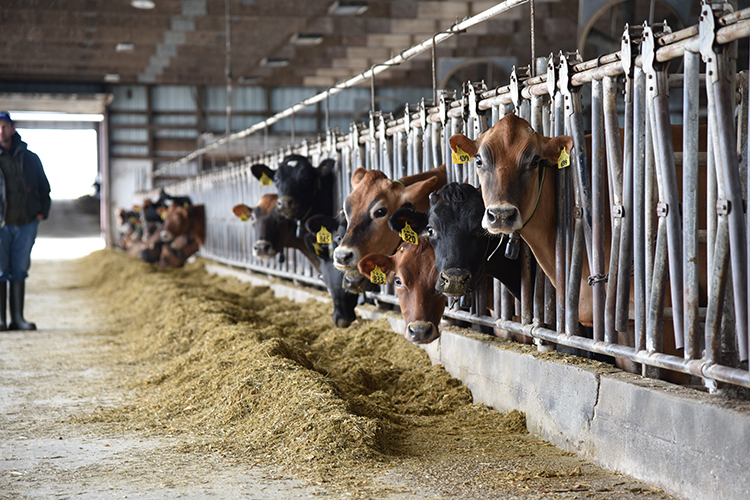
A productive cow isn’t always a profitable cow. A profitable cow performs in milk volume and quality, breeds back quickly and experiences few health events. Tracking the cost of the productive cow might reveal she isn’t necessarily profitable.
Fortunately, advancements in herd management software and technology make it easier to identify outlier cows that are likely costing you more. New tools and insights can help assess individual cow costs and even assign them a value based on performance.
Monitor key profit drivers
Herd management software can help you monitor key profit drivers, including productivity, reproduction and health. Careful monitoring helps you identify negative outlier cows, which could be dragging down herd profitability.
Reproductive performance: Pregnancy rate is a key measure of reproduction success. Herd management tools can help you focus on the whole herd or a specific lactation group. You can choose from parameters such as reproduction code, technician, conception rate or service rate.
Setting up key performance indicator (KPI) thresholds allows you to focus on specific goals for your herd. For example, if your voluntary waiting period (VWP) goal is 60 days and you are trending closer to 70 days, your management system can alert you to a deviation from your protocol.
Health events: You can get an accurate picture of what every cow costs you by using software to track individual health events and assess the impact of each type of event. Using a health event tracking tool lets you assign a cost for treatment (labor and materials) and lost milk production for an accurate view of an individual cow’s costs and how she compares to her herdmates.
A cow with more health events than her herdmates may not be a competitively profitable cow, even if her production is similar.
Tying it all together
Tools are also available to rank your cows based on reproduction, health events, production and feed costs. Individual cow decision tools help measure a cow’s value compared to the average replacement heifer. These tools can help you decide if an animal qualifies for early dry-off or should be culled and replaced with the next available fresh heifer.
Cow valuation tools assign every animal a value using multiple factors. You can adjust cull cow price, replacement animal price, marginal feed costs, maintenance costs, expected values for future milk price and more.
As your herd and markets change, it’s best to recalculate the value of each cow and identify your lower-valued animals. For example, if a low-value cow is not pregnant, the right tool can help you see whether becoming pregnant would positively or negatively impact her value. If pregnancy would decrease her value, she may be a good candidate for culling.
By taking advantage of the tools and insights available beyond traditional herd management tasks, you can make it easier to surface outlier cows for profitable decision-making. Work with your herd management software team or farm performance consultant to ensure you’re making it easier to manage cow performance. Visit VAS.com or contact VAS customer support at 559-686-9496.
About VAS



